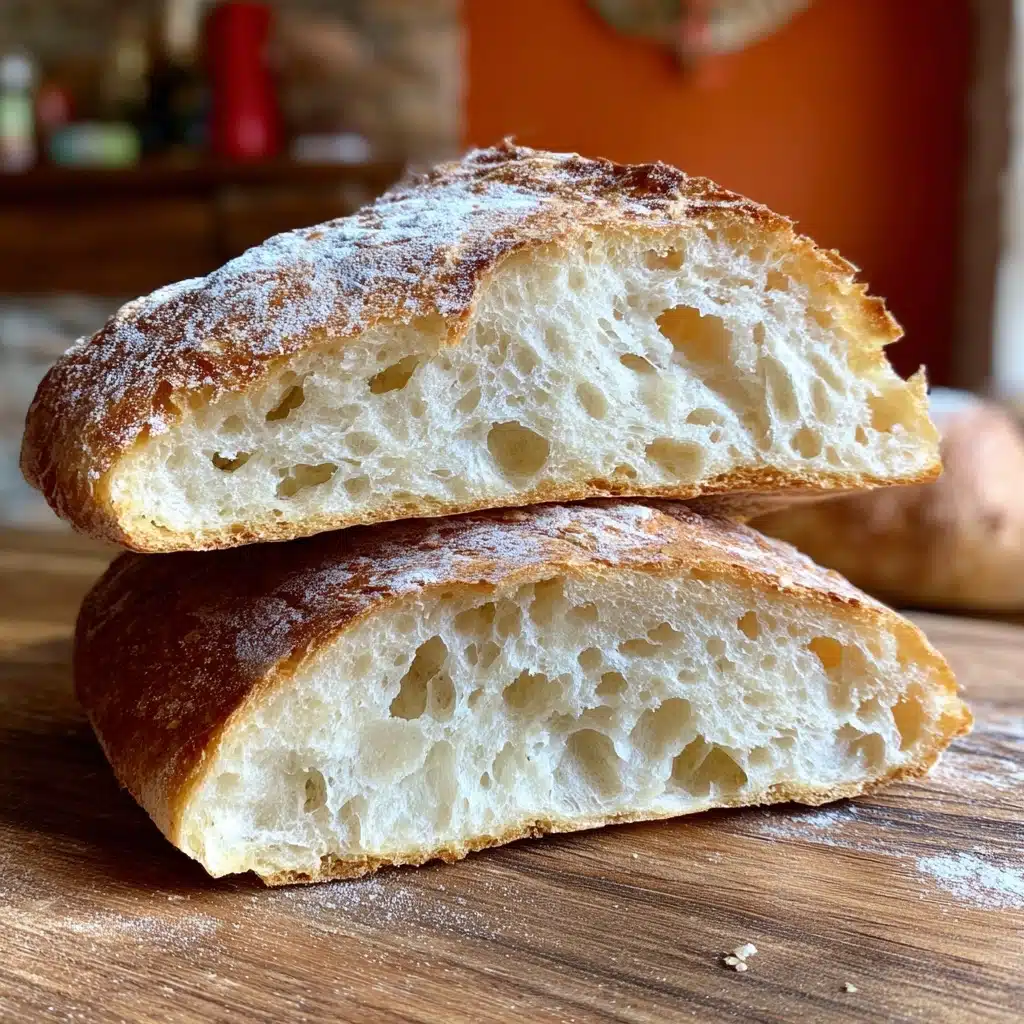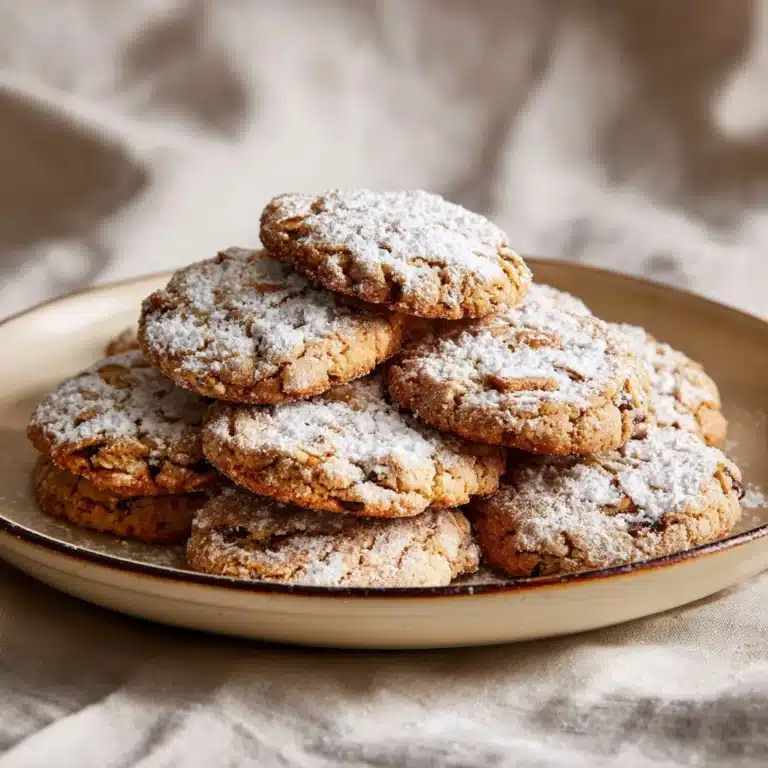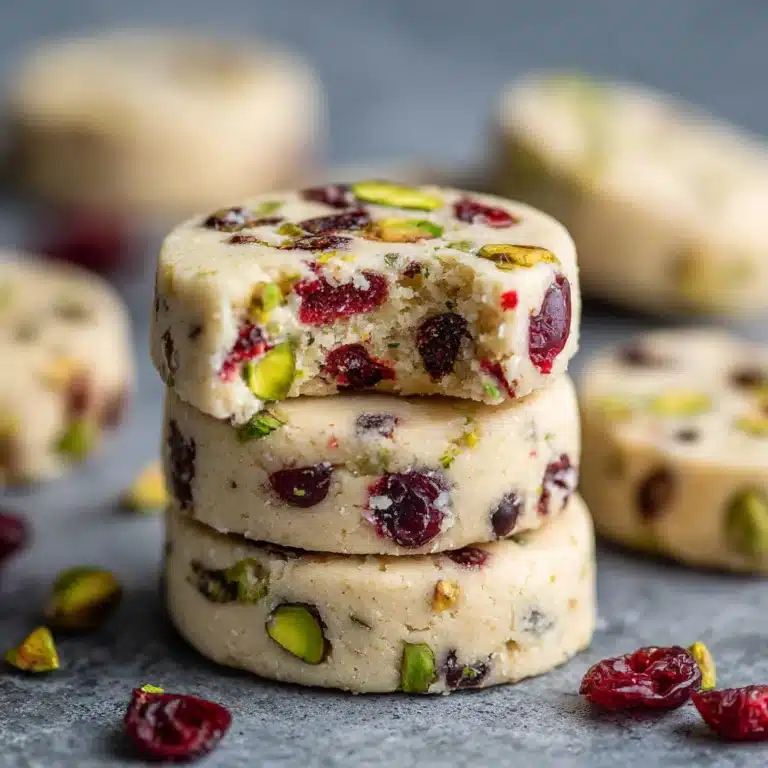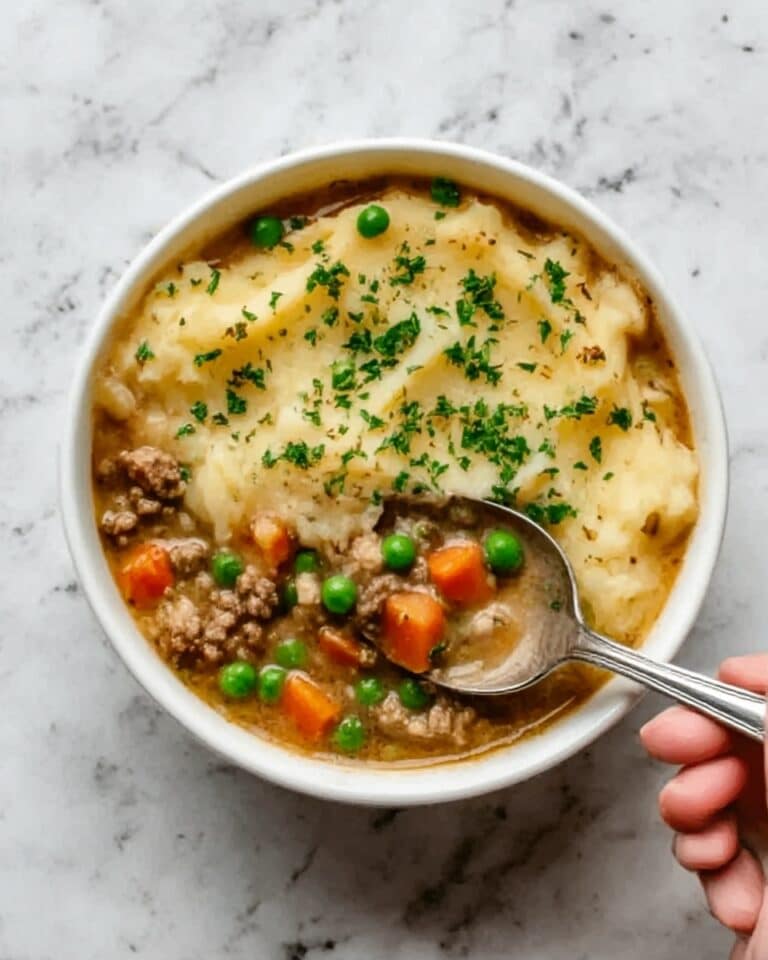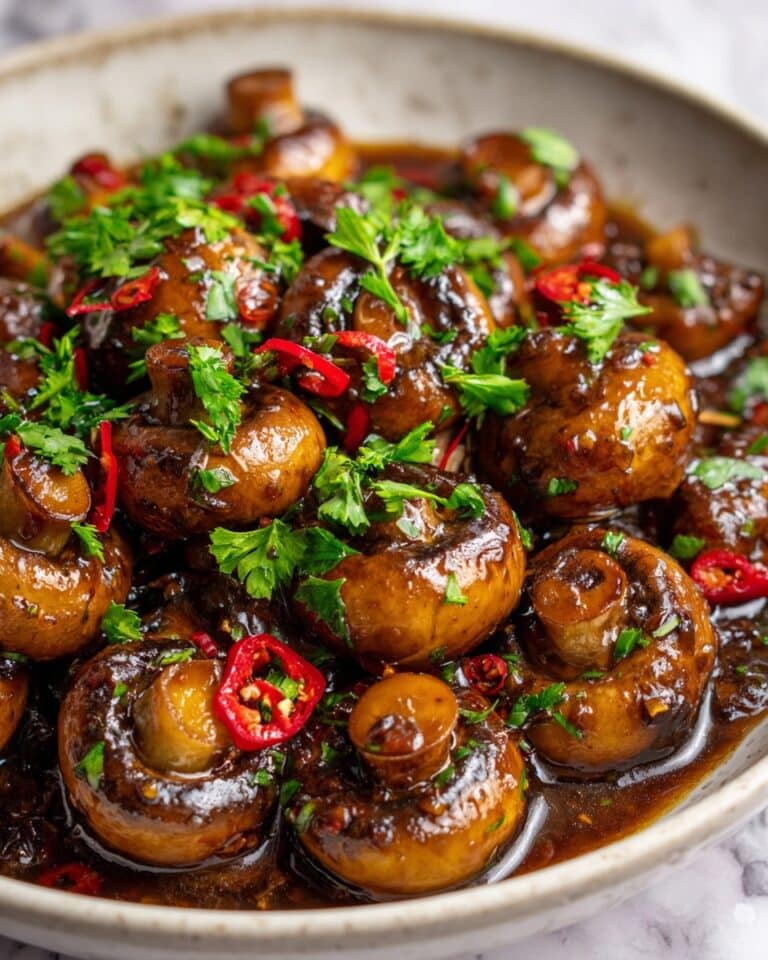If you’ve ever dreamt of that perfect Italian bread with a shatteringly crisp crust and an airy, chewy interior, Ciabatta is your answer! This classic staple is the secret to show-stopping sandwiches and an irresistible sidekick for soups and salads. With its unique open crumb and golden crust, Ciabatta truly tastes like it came fresh from a rustic bakery—yet it’s wonderfully approachable to make at home. Whether you’re a bread enthusiast or a curious beginner, this recipe gives you all the tools to bake bread that makes every meal special.
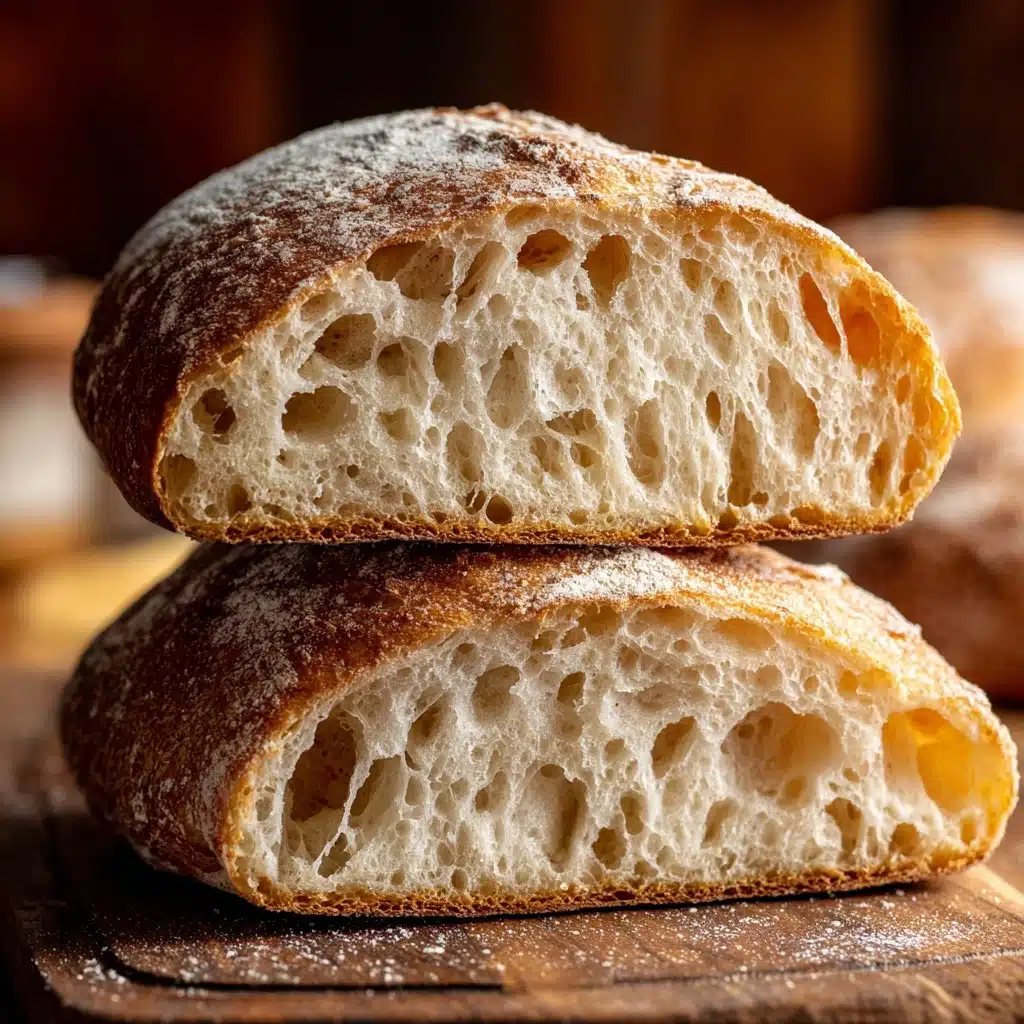
Ingredients You’ll Need
Making authentic Ciabatta requires only a handful of ingredients, but don’t let the simplicity fool you. Each element plays a crucial role in achieving that signature texture, flavor, and stunning crust that set this bread apart.
- Bread Flour: The higher protein content creates structure for an airy crumb and crispy crust.
- Warm Water (110°F/45°C): Ensures optimal yeast activation so your Ciabatta rises beautifully.
- Active Dry Yeast: Just the right amount for subtle fermentation flavor and that impressive lift.
- Salt: Adds essential balance and depth, brightening the wheat flavor in every bite.
- Olive Oil (for greasing): Prevents sticking and infuses a hint of Mediterranean richness.
- Extra Flour (for dusting): Keeps your dough easy to handle and helps form that iconic rustic exterior.
How to Make Ciabatta
Step 1: Activate the Yeast
In a large mixing bowl, pour in your warm water and sprinkle the yeast over the top. Let it sit undisturbed for about 5 to 10 minutes, or until the surface begins to look creamy and foamy. This short rest is your assurance that the yeast is lively and ready to build the signature lift and flavor that makes Ciabatta so fantastic.
Step 2: Mix the Dough
Add the bread flour and salt directly to the bowl with your bubbly yeast mixture. Use a wooden spoon or a dough whisk to incorporate everything until you get a shaggy dough—don’t worry about perfection here! The mixture will look sticky and a bit rough, but that’s exactly what you want for Ciabatta’s light but satisfying texture.
Step 3: First Rest
Cover the bowl with plastic wrap and let your dough rest at room temperature for 30 minutes. This rest allows the flour to fully hydrate and the gluten to begin developing on its own, priming the dough for that characteristic airy crumb you know and love.
Step 4: Stretch and Fold
Now comes the magic technique behind Ciabatta’s open crumb. Keeping the dough in the bowl, gently stretch one side of the dough upwards and fold it over itself. Rotate the bowl and repeat this motion on all four sides. Cover and let it rest for 30 minutes. Repeat this stretch-and-fold process every 30 minutes for a total of four times over two hours. Each fold builds strength and helps retain those precious air bubbles!
Step 5: Bulk Rise
After the final stretch and fold, cover the bowl and let the dough rise at room temperature for another 1 to 2 hours until it’s noticeably puffy and doubled in size. This slow rise is what gives Ciabatta its beautifully chewy inards and deep, complex flavor.
Step 6: Shape the Loaves
Generously dust a baking sheet with flour. With care, tip the dough out onto the surface—being gentle helps preserve all those airy pockets you’ve created. Divide the dough in half lengthwise with a bench scraper or knife. Gently coax each half into a loose rectangle without pressing too hard, then transfer to the floured baking sheet. Ciabatta dough is delicate, so less handling equals more holes!
Step 7: Final Proof
Cover the dough pieces loosely with a kitchen towel or plastic wrap and let them rest for another 30 to 45 minutes. The loaves will gently puff up again, setting you up for ultimate oven spring and that picture-perfect rustic look.
Step 8: Preheat and Bake
Place a baking stone or inverted baking sheet inside your oven and preheat to 450°F (230°C). When the dough is ready, swiftly but carefully transfer both loaves onto the hot surface. Bake for 20 to 25 minutes until the crust is deeply golden and crisp, and the loaves sound hollow when tapped. Let the Ciabatta cool completely before slicing to preserve its gorgeous crumb.
How to Serve Ciabatta
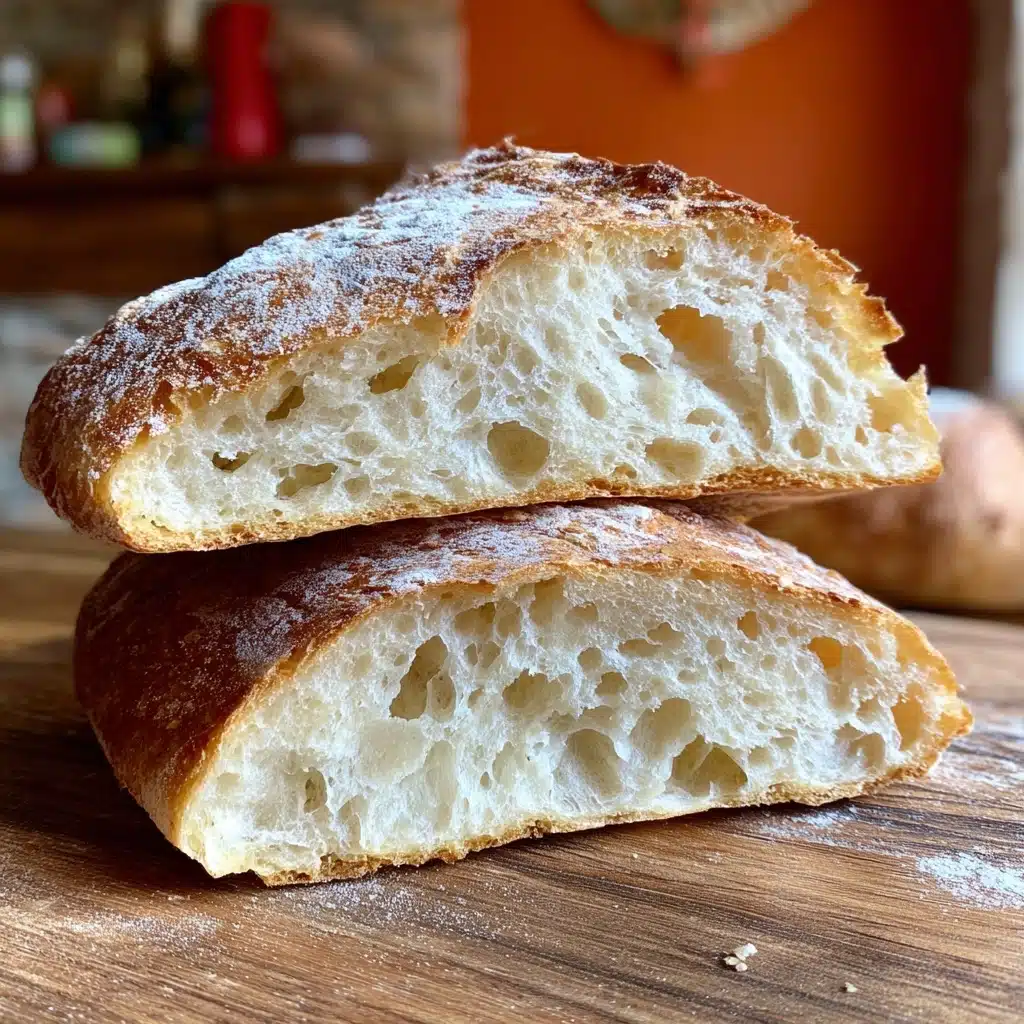
Garnishes
Try brushing your still-warm Ciabatta with a little olive oil and a sprinkle of flaky sea salt for extra flavor and sheen. For a more aromatic touch, rub a cut clove of garlic over the surface right after baking—it’s a little Italian trick that transforms each bite!
Side Dishes
Ciabatta shines when paired with vibrant sides like tomato-basil salad, classic Italian minestrone, or silky roasted pepper soup. The bread is perfect for both sopping up broths and framing a beautiful antipasto platter.
Creative Ways to Present
Slice your Ciabatta horizontally and turn it into sandwich masterpieces with layers of grilled vegetables, cheese, or prosciutto. Toast cubes for irresistible homemade croutons, or halve and grill pieces for an epic bruschetta base, topped with anything from sun-ripened tomatoes to creamy ricotta.
Make Ahead and Storage
Storing Leftovers
Wrap leftover Ciabatta tightly in foil or keep it in a bread bag at room temperature for up to two days. Avoid plastic, which can soften the crust—Ciabatta’s allure is its bark-like crunch!
Freezing
For longer storage, slice the cooled Ciabatta and freeze the pieces in a zip-top bag. They’ll keep their signature flavor and texture for up to two months, ready to revive with a quick toast or oven warm-up whenever the craving strikes.
Reheating
To return that fresh-baked crispness, briefly warm Ciabatta in a 350°F (175°C) oven for about 8 to 10 minutes. If using slices straight from the freezer, just pop them in a toaster or bake until warmed through for a perfect bite every time.
FAQs
Can I use all-purpose flour instead of bread flour for Ciabatta?
You can, but bread flour is highly recommended for creating that signature open crumb and chewy bite. All-purpose will work in a pinch but may yield a slightly denser texture.
Why is my Ciabatta dough so sticky?
Sticky dough is a classic trait of Ciabatta! The high hydration is key for an airy interior with large holes. Lightly dust your hands and surfaces with flour, but avoid adding too much, which can make the bread tough.
Can I add herbs or olives to this recipe?
Absolutely! Fold in chopped fresh rosemary, thyme, or pitted olives during the final stretch and fold for a delicious flavor twist. Just be gentle to preserve the dough’s lightness.
How do I know when the Ciabatta is fully baked?
Look for a deep golden color and a crust that feels crisp. Tap the bottom of the loaves—if they sound hollow, they’re done. An instant-read thermometer should register about 200°F (93°C) inside.
Is Ciabatta vegan?
Yes, this recipe is completely vegan! All you need are plant-based staples and a bit of olive oil for greasing, so it’s perfect for a variety of dietary needs.
Final Thoughts
There’s truly nothing like making your own Ciabatta and tasting that just-baked, airy loaf. Don’t be intimidated by the process—the rewards are totally worth it, and you’ll impress everyone around your table. Try it once, and it will become your go-to bread for celebrating everyday meals Italian-style!
Print
Ciabatta Recipe
- Total Time: 3 hours 25 minutes
- Yield: 2 medium loaves (8–10 servings) 1x
- Diet: Vegan
Description
Learn how to make delicious homemade ciabatta bread with this easy recipe. This classic Italian bread is crusty on the outside and soft on the inside, perfect for sandwiches or as a side for soups.
Ingredients
Main Ingredients:
- 4 cups bread flour
- 1 1/2 cups warm water (110°F/45°C)
- 1/2 tsp active dry yeast
- 1 1/2 tsp salt
Additional:
- 1 tbsp olive oil (for greasing)
- extra flour for dusting
Instructions
- Prepare Yeast Mixture: In a large mixing bowl, combine warm water and yeast. Let it sit until foamy.
- Mix Dough: Add bread flour and salt, stir until a shaggy dough forms.
- Rest Dough: Cover and let the dough rest for 30 minutes at room temperature.
- Stretch and Fold: Every 30 minutes, fold the dough four times over 2 hours.
- Rise Dough: Let the dough rise for 1–2 hours until doubled.
- Shape and Bake: Shape dough, let rise, then bake at 450°F (230°C) for 20–25 minutes.
- Cool and Serve: Let the bread cool completely before slicing.
Notes
- Use bread flour for best results.
- Handle the dough gently to maintain its airy structure.
- Ciabatta is great for sandwiches or with soups.
- Prep Time: 3 hours
- Cook Time: 25 minutes
- Category: Bread
- Method: Baking
- Cuisine: Italian
Nutrition
- Serving Size: 1 slice (1/10 loaf)
- Calories: 160
- Sugar: 0 g
- Sodium: 290 mg
- Fat: 1 g
- Saturated Fat: 0 g
- Unsaturated Fat: 1 g
- Trans Fat: 0 g
- Carbohydrates: 32 g
- Fiber: 1 g
- Protein: 5 g
- Cholesterol: 0 mg
